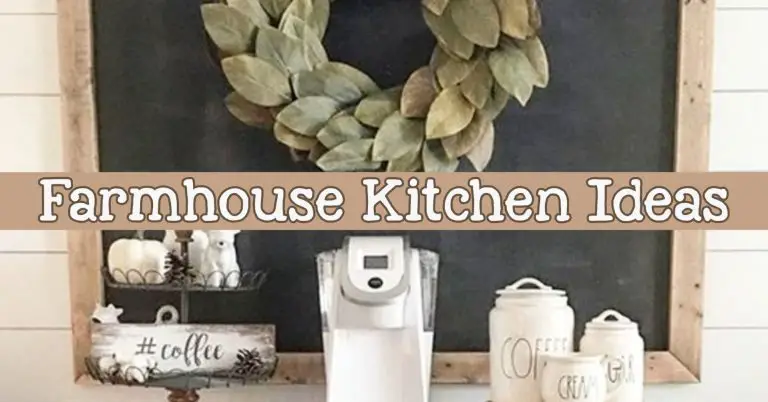How To Make a Guinea Pig Cage Out Of a Dresser
So, the kids each got a Guinea Pig from Santa this year (grandparents are great, right?!?! ::insert eyeroll here:: ) – so now, we need a good cage for them. We saw the cutest ideas to turn an old dresser into a Guinea Pig house so, naturally, I HAD to know how to do it.
Below is everything I’ve learn about repurposing a tall dresser into a multi-story Guinea Pig Dream House.

Updated on June 21, 2024
Posts may contain affiliate links and yes, there's ads too (that's how I keep the lights on here). Ads *should* reduce as you scroll down the page - thank you for understanding and for supporting the blogging community - we all work so hard! Enjoy and feel free to share on Pinterest or with your friends!
Before I get started, I just want to say that I, as Mom, really just wanted to BUY a house for their Guinea Pigs.
This is the cage *I* wanted (and it’s AWESOME!)
All the doors open forward – which means it can go anywhere without worrying about blocking a door.
It’s ON WHEELS so super easy to move around.
It’s grey so it matches our grey living room or can go in our grey and white kitchen.
AND, has the pull out tray for easy cleaning.
Here’s what the cage looks like:
This is the Guinea Pig House I Wanted To GetFound Here
BUT….
The kids just HAVE to make this a DIY project (imagine that, the kids of Jen who runs Jen’s Clever DIY Ideas here at involvery.com, would RATHER a do-it-yourself project than BUYING a cage – haha!
So that meant I had to research EVERYTHING I needed to know about turning an old thrift store dresser into a Guinea Pig Dream House.
I have LOTS of cool ideas for old dressers missing drawers, but I’ve never done this project before.
Here’s everything I’ve learned plus a tutorial video showing HOW to make a Guinea Pig cage from an old dresser step by step.
Guinea Pig Dresser House Tips
Turning an old dresser into a fancy multi-level hutch for your Guinea Pigs (or hamsters) is such a fun idea, but before you make your plans, always keep in mind the safety and well-being of your Guinea Pig before building anything.
Here are some good ol’ tips and tricks to keep in mind when you’re making a cool Guinea Pig cage out of an old dresser:

Choose a sturdy, solid wood dresser that is large enough to provide enough space for your guinea pig to move around comfortably. Avoid using dressers made of particle board or other flimsy materials, as they may not be strong enough to support the weight of your guinea pig and its habitat.
Remove all drawers from the dresser and set them aside. You will not need them for the cage (unless you try one of the cool ideas we’ll talk about below).
Measure and cut a piece of plastic sheeting or linoleum to fit the bottom of the dresser. This will create a waterproof barrier and make it easier to clean the cage.
Place the plastic sheeting or linoleum in the bottom of the dresser.
Cut a hole in the back of the dresser large enough for your guinea pig to enter and exit the cage. You can use a jigsaw or a hole saw for this step.
Install a ramp or stairs leading up to the hole so that your guinea pig can easily access the cage. You can use wood or plastic for the ramp, but make sure it is sturdy and secure.
Add bedding, such as Aspen shavings or a fleece liner, to the bottom of the cage to provide a comfortable and safe place for your guinea pig to sleep.
Aspen Shavings For Guinea PigsFound HereGuinea Pig House WIth HideoutFound HereGuinea Pig Bunk BedsFound Here2-Story Guinea Pig CageFound Here
Place a water bottle and a food dish inside the cage, as well as any toys or other items your guinea pig enjoys.
Make sure the cage is kept in a well-ventilated area, away from drafts and direct sunlight, and that it is cleaned regularly to maintain a healthy and comfortable environment for your guinea pig.
It is important to note that guinea pigs are social animals and need the company of other guinea pigs. If you are only able to provide a single guinea pig with a cage made out of a dresser, you should consider getting a second guinea pig so that they can keep each other company.
Do you have an old dresser collecting dust in your garage? If so, you’re in luck! With a little creativity and some basic DIY skills, you can transform that old dresser into a spacious and stylish home for your guinea pig.
4 Ways To Make a Guinea Pig House From an Old Dresser
Here are four ways to make a Guinea Pig apartment-style cage out of an old dresser:
- Cut out the back panel: One of the easiest ways to turn a dresser into a guinea pig cage is to remove the back panel and add some wire mesh or screening. This will allow your guinea pig to have plenty of ventilation and also give them a view of their surroundings. You can also add a ramp or ladder to the top of the dresser so your guinea pig can climb and play.
- Create a modular cage: Another option is to use the drawers of the dresser as separate living spaces for your guinea pig. You can cut out the front panels of the drawers and add wire mesh or screening to create a modular cage that can be easily rearranged to suit your needs. This is a great option if you want to give your guinea pig plenty of room to explore and play.
- Use the drawers as hiding spots: If you don’t want to cut out the fronts of the drawers, you can still use them as hiding spots for your guinea pig. Simply line the bottom of each drawer with some bedding and add a few toys or treats to encourage your guinea pig to explore. You can also connect the drawers with some tunnels or tubes to create a more complex living space for your guinea pig.
- Add a loft: If you have a tall dresser, you can add a loft or second level to the cage to give your guinea pig even more space to play and explore. You can use a piece of wood or some metal shelving to create the loft, and then add some wire mesh or screening to the sides to keep your guinea pig safe.
No matter which option you choose, be sure to add plenty of bedding, toys, and hiding spots to keep your guinea pig happy and entertained. And don’t forget to regularly clean the cage to ensure your guinea pig stays healthy and comfortable. With a little effort, you can turn that old dresser into a cozy and stylish home for your guinea pig.
Other Furniture You Can Use
Don’t HAVE an old dresser?
Here are 9 other types of old furniture you can convert and repurpose into a Guinea Pig house:
- Dresser: As we already talked about, an old dresser can be repurposed into a spacious and stylish guinea pig cage by cutting out the back panel or using the drawers as separate living spaces.
- Nightstand: A small nightstand or end table can be converted into a cozy home for a single guinea pig by cutting out the back panel and adding some wire mesh or screening.
- Bookcase: A bookcase can be easily modified into a multi-level guinea pig cage by adding some wire mesh or screening to the sides and creating a ramp or ladder for your guinea pig to climb.
- Entertainment center: An old entertainment center can be converted into a large guinea pig cage by removing the back panel and adding some wire mesh or screening. You can also use the shelves and compartments as hiding spots or living spaces for your guinea pig.
- Kitchen cabinet: An old kitchen cabinet can be upcycled into a guinea pig cage by removing the doors and adding some wire mesh or screening to the sides. You can also use the shelves and drawers as living spaces or hiding spots for your guinea pig.
- Coffee table: A large coffee table can be converted into a guinea pig cage by removing the top and adding some wire mesh or screening to the sides. You can also add a ramp or ladder to the top of the table to give your guinea pig more room to play and explore.
- Armoire: An old armoire can be repurposed into a spacious and stylish guinea pig cage by removing the doors and adding some wire mesh or screening to the sides. You can also use the shelves and compartments as living spaces or hiding spots for your guinea pig.
- Toy chest: A large toy chest can be converted into a guinea pig cage by removing the top and adding some wire mesh or screening to the sides. You can also use the inside of the chest as a hiding spot or living space for your guinea pig.
- TV stand: An old TV stand can be repurposed into a small guinea pig cage by cutting out the back panel and adding some wire mesh or screening. You can also use the shelves and compartments as living spaces or hiding spots for your guinea pig.
Video Tutorial
Here is exactly how to convert a dresser into a Guinea Pig cage.
Now, she made this dresser house for her hedgehogs, but it’s the same concept for a Piggie house.
She DID say it’s a pretty hard DIY project and recommends just BUYING a cage if you’re not that handy or don’t have the time needed to make this kind of cage.
Aspen Shavings For Guinea PigsFound HereGuinea Pig House WIth HideoutFound HereGuinea Pig Bunk BedsFound Here2-Story Guinea Pig CageFound Here
15 Fun Facts About Guinea Pigs
- Guinea pigs are native to the Andes mountains in South America, where they were domesticated by the Incas over 5,000 years ago.
- Guinea pigs are not actually pigs – they are part of the rodent family.
- Guinea pigs are social animals and enjoy living in groups. In the wild, they live in large colonies of up to 50 individuals.
- Guinea pigs have poor eyesight, but they have excellent hearing and a keen sense of smell.
- Guinea pigs are vegetarians and require a diet rich in hay, vegetables, and a small amount of pellets to stay healthy.
- Guinea pigs are vocal animals and have a variety of different calls and noises they use to communicate with each other.
- Guinea pigs are known for their love of playing and exploring, and they enjoy having plenty of toys and hiding spots in their living space.
- Guinea pigs are sensitive to heat and can easily become overheated, so it’s important to keep them in a cool, well-ventilated environment.
- Guinea pigs have a lifespan of around 5-7 years, but some individuals can live up to 10 years with proper care.
- Guinea pigs are prone to a variety of health problems, including respiratory infections, dental issues, and mites, so it’s important to keep an eye on their health and seek veterinary care if necessary.
- Guinea pigs are known for their fluffy, soft fur, which can come in a variety of colors and patterns.
- Guinea pigs can be trained to do simple tricks, such as coming when called or standing on their hind legs.
- Guinea pigs are often used as therapy animals due to their gentle and friendly nature.
- Guinea pigs are known for their love of being petted and cuddled, and they often form strong bonds with their owners.
- Guinea pigs are popular pets all over the world, with millions of individuals living in homes as beloved companions.








